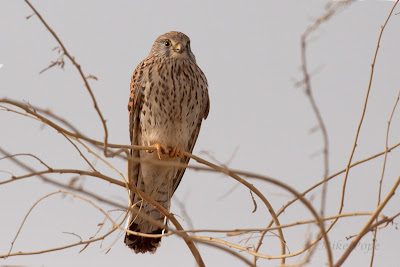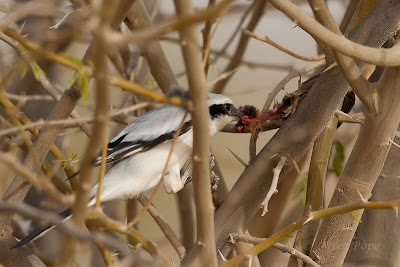Since Spring was in the air, I decided to head out to the working oasis in the west of Kuwait and was inside the farm before 7am. As mentioned before, arrivng early doesnt always pay divedends, but it is great to see migrants slowly drifting in.
It was heaving with Wagtails around the new pond at the entrance. Mostly Yellow Wags, a few White Wagtails (we are still trying to figure out the sub-species), but this is Alba, not quite showing its black cap yet
 |
| White Wagtail (Motacilla alba) |
 |
| Grey Wagtail (Motacilla cinerea) |
 |
| Lesser Whitethroat (Sylvia curruca) |
 |
| Common Chiffchaff (Phylloscopus collybita) |
 |
| Common Swift (Apus apus) |
 |
| Alpine Swift (Tachymarptis melba) |
As was this Common Swift which had a broken wing from a shotgun pellet
 |
| Wounded Common Swift (Apus apus) |
 |
| Pale throat Eastern Black-eared Wheatear (Oenanthe h. melanoleuca) |
 |
| Dark throat Eastern Black-eared Wheatear (Oenanthe h. melanoleuca) |
 |
| Northern Wheatear (Oenanthe oenanthe) |
 |
| Male Common Redstart (Phoenicurus p. samamiscus) |
A single Song Thrush was still seen, but I cant imagine it staying much longer
 |
| Song Thrush (Turdus philomelos) |
 |
| Eurasian Hoopoe (Upupa epops) |
 |
| Male Semi-collared Flycatcher (Ficedula semitorquata) |
 |
| Female Common Kestrel (Falco tinnunculus) |
 |
| Male Common Kestrel (Falco tinnunculus) |
 |
| Woodchat Shrike (Lanius senator) |
 |
| Turkestan Shrike (Lanius phoenicuroides) |
If you are a little squeamish, this may not be for you - but in the absence of seeing Lion kills when on Safarin in South Africa, this interaction was quite fascinating. I noted that the Shrike started eating from the head, until it got to and devoured the brain. After some more tugging and pulling the prey got dislodged and fell out of the tree, the Shrike pounced on it and then flew off to another location with the bird in it's beak..
 |
| Mauryan Grey Shrike (Lanius lahotra) with prey |
At the base of one of the thickets, I found a skulking Menetries Warbler and no wander it was keeping hidden with all the Shrike activity about
 |
| Ménétriés’s Warbler (Sylvia mystacea) |
 |
| Collared Pratincole (Glareola pratincola) |
 |
| Spotted Crake (Porzana porzana) |
 |
| Male Little Crake (Porzana parva) |
 |
| Female Little Crake (Porzana parva) |
 |
| Marsh Sandpiper (Tringa stagnatilis) in breeding plumage with a Ruff (Philomachus pugnax) |
 |
| Glossy Ibis (Plegadis falcinellus) |
A couple of Water Pipits were still around, but there numbers have diminished quite quickly over the past few weeks and after one last scan it was time to head home for lunch.
 |
| Water Pipit (Anthus spinoletta) |







قواكم الله شي روعة بصراحة
ReplyDeleteشسم هالطير لقيته بحديقة البيت
http://www.flickr.com/photos/hams_88/7104948913/in/photostream/